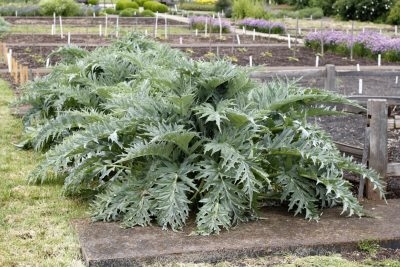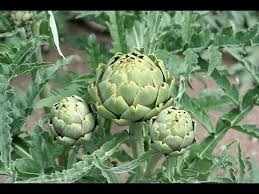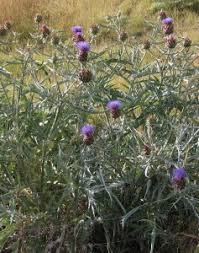Advice for the Home Gardener from the Help Desk of the
UC Master Gardener Program of Contra Costa County

Help Desk Response: Thank you for contacting the UC Master Gardener Program Help Desk. You asked if you should be concerned about artichokes being an invasive plant. Invasive artichoke thistles are certainly a problem in many Bay Area parks and open spaces. Here is more information artichoke thistles from the California Invasive Plant Council:
https://www.cal-ipc.org/resources/library/publications/ipcw/report38/.

You also asked if other parts of the plant are edible. While the leaves and stems of the artichoke plant could be eaten, the leaves are very prickly and the stems are very tough. We grow them just for the very tasty immature flowers. Many people include several inches of the stem when they harvest artichokes. Unless the artichokes are very young, the stems will probably need to be peeled to be edible, but they can be a nice extension of the tasty heart.
Cardoon, a variety of the artichoke thistle, is grown for its edible stems (and even these can be tough), but has the possibility of escaping because its small and the spiny flowers are not eaten and the seed can disperse to other locations.

Please let us know if you have more questions.
Happy gardening!
Help Desk of the UC Master Gardener Program of Contra Costa County (SEH)
Note: UC Master Gardeners Program of Contra Costa's Help Desk is available almost year-round to answer your gardening questions. Except for a few holidays (e.g., last 2 weeks December), we're open every week, Monday through Thursday for walk-ins from 9:00 am to Noon at 2380 Bisso Lane, Concord, CA 94520. We can also be reached via telephone: (925) 608-6683, email: ccmg@ucanr.edu, or on the web at http://ccmg.ucanr.edu/Ask_Us/. MGCC Blogs can be found at http://ccmg.ucanr.edu/HortCoCo/ You can also subscribe to the Blog.